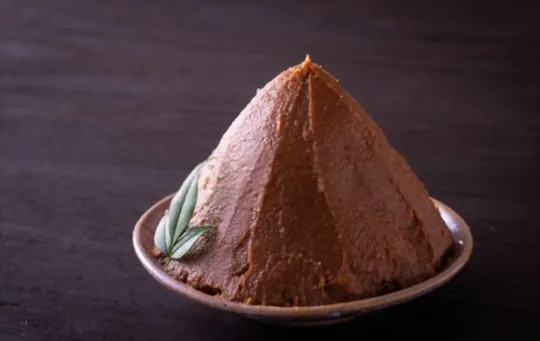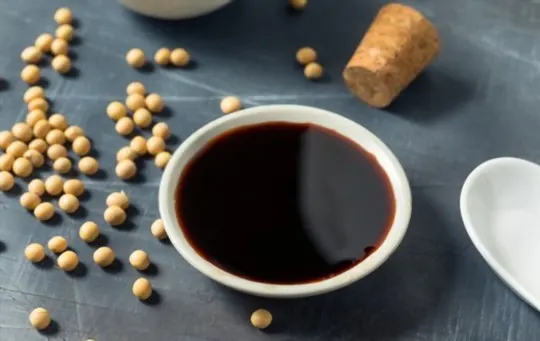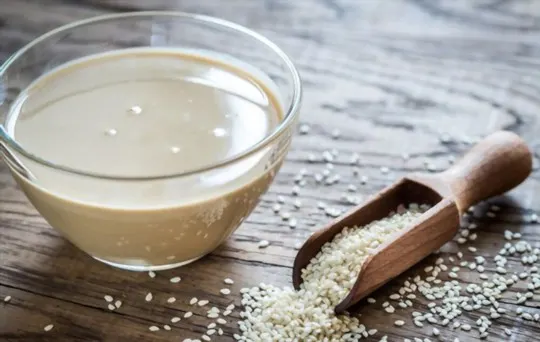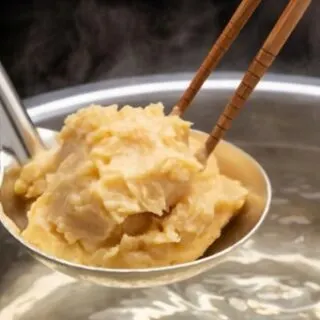Struggling to find the perfect substitutes for white miso paste? You’re not alone.
Discover five alternatives that can replace white miso paste in many recipes – from savory sauces to delicious salads.
What’s White Miso Paste?

White Miso is a fermented soybean paste that is commonly used in Japanese cuisine.
It has a creamy texture and a slightly sweet, salty flavor.
The fermentation process breaks down the complex proteins and sugars present in the soybeans, resulting in a product that’s easier to digest than the raw beans.
The fermentation process also increases the flavor of miso significantly, giving it an incredibly rich umami flavor that is loved by chefs all over the world.
White Miso has a delicate flavor and light color compared to other varieties of miso available on the market today.
As for how it should be used, like most ingredients, its usage depends largely on personal preference and recipe requirements.
However, here are some tips on using White Miso Paste:
- Add White Miso Paste to marinades for meat or fish to really bring out the flavors during cooking.
- Mix White Miso Paste into fried rice or noodle dishes for added depth of flavor.
- Stir White Miso Paste into soups or stews to add some creamy richness.
- Toss White Miso Paste into salads for an intriguing flavor combination.
- Spread a thin layer of white miso paste over vegetables before roasting them in the oven.
- Use white miso paste as a flavorful condiment on its own or diluted with water as part of dipping sauces.
5 Best White Miso Paste Substitutes to Consider
For those looking for white miso paste substitutes, there are a few options that could easily serve as a substitute in some or all of your favorite recipes.
Each alternative will offer a slightly different flavor profile, so consider what flavors your recipe requires before choosing one.
1 – Light Soy Sauce

Light soy sauce is the closest substitute to white miso paste in terms of color and flavor.
This type of soy sauce is slightly sweeter and lighter than regular dark soy sauce and is made with fermented soybeans, wheat, salt and water.
In terms of substitutes, light soy sauce can be used in any recipe that calls for white miso paste, although it will result in a different flavor profile.
This can work to your advantage if you want to create unique flavors with your cooking.
For every tablespoon of white miso paste used in a recipe, replace it with two tablespoons of light soy sauce.
2 – Yellow Miso

Yellow miso is a great substitute for white miso paste because it has a similar flavor but with slightly less saltiness.
There are some subtle differences in the flavors, however.
Yellow miso is milder and sweeter than white miso and has a more subtle umami flavor.
As with white miso, it will depend on the brand used what the exact flavor profile will be.
It’s important to note that yellow miso is not as widely available as other types of misos so you may have difficulty finding it in your local grocery stores.
However, it can be found online or at specialty Asian supermarkets if necessary.
3 – Red Miso

Red miso paste is a type of miso that is fermented for a longer period than white miso and typically has a dark brown to reddish-brown color.
It has an even richer, bolder and more complex flavor than white miso featuring both salty and slightly sweet notes.
Red miso is often used in soups, stews, sauces, seafood dishes and marinades.
It can also be used to make Asian dips or spreads for sandwiches or crackers.
You should note that the replacement ratio of red to white miso is slightly different as red generally has a higher salt content at 18-22%, while the salt content of white miso falls between 10-18%.
If substituting red for white in any recipe, start with half the amount called for in the recipe and adjust as needed.
4 – Tamari

Tamari is a type of soy sauce that is gluten-free, dark rather than light in color, and made with little or no wheat.
It has a rich, savory flavor similar to miso paste and it’s widely available in most grocery stores.
While you can use tamari as an alternative to white miso paste, it will have a more intense flavor and won’t have the same thick texture.
For best results when using tamari as a substitute for white miso paste, add the soy sauce to other liquids in the dish such as broth or water.
You can also mix tamari with rice vinegar for a slightly tangy balance or whisk together with sesame oil for added depth and richness.
Keep in mind that each of these ingredients will vary depending on the brand so adjust your ratios accordingly.
5 – Tahini

Tahini is made from ground sesame seeds – the same kind that are used for tahini, hummus, and other recipes.
While tahini has a distinct sesame flavor, it can add some depth and richness to your dishes if you’re looking for a white miso paste substitute.
Since tahini is not fermented like miso paste, its nutrient content is different and it’s not as high in probiotics or proteins.
It also tends to separate in a dish so make sure to whip up any sauce or soup you’re making before serving.
Conclusion
In conclusion, white miso paste is a type of Japanese seasoning made from fermented soybeans and rice, giving it a salty, umami flavor.
It can be used in a variety of dishes to bring out the flavor of different ingredients.
If you don’t have white miso paste on hand at home, there are several substitutes that will still give you good results, including yellow or red miso paste, dark tahini sauce, shiro dashi or fish sauce.
All these alternatives have their own unique flavors and should be used based on the particular recipe that you are preparing.
Experimentation is key to finding the perfect substitute for white miso paste that will still give the dish the umami punch that it needs to come alive.

5 Best White Miso Paste Substitutes to Consider
Ingredients
- Light Soy Sauce
- Yellow Miso
- Red Miso
- Tamari
- Tahini
Instructions
- Choose your preferred substitute from the list of options.
- Organize all of your ingredients.
- Use the proper substitute to cook your recipes.

Carrie is a food writer and editor with more than 15 years of experience. She has worked for some of the biggest names in the food industry, including Bon Appétit, Food & Wine, and Martha Stewart Living.
As the Editor in Chief of IntroChicago.com, Carrie oversees all of the content on the site. She also manages the team of contributing writers and editors, who help to create delicious recipes, helpful tips, and informative articles that you’ll find on the site.
A native of the Chicago area, Carrie is passionate about all things food. She loves trying new restaurants and experimenting with new recipes in her kitchen. She’s also a graduate of the Culinary Institute of America, so she knows a thing or two about food!
